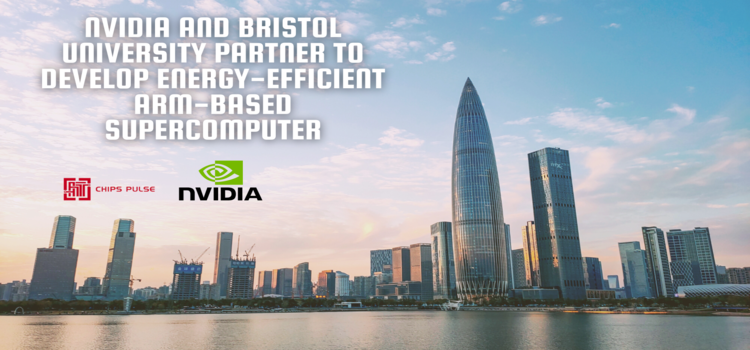Nvidia, in partnership with Bristol University, has developed a supercomputer using their Arm-based Grace CPU. With a projected FP64 peak performance of approximately 2.7 petaflops and power consumption below 270 kilowatts, this system is among the three most energy-efficient non-accelerated supercomputers globally.
The GW4 Alliance research consortium, comprised of Bristol University, Bath University, Cardiff University, and Exeter University, is leading this project. This supercomputer, named Isambard 3, is one of several Nvidia Arm-based systems worldwide, including those incorporating GPUs constructed at the Swiss National Supercomputing Centre and Los Alamos National Laboratory in the United States. Isambard 3, constructed by Hewlett Packard Enterprise, will empower Europe's scientific research community to achieve breakthroughs in AI, life sciences, medical research, astrophysics, and biotechnology.
It will enable researchers to create intricate models of complex structures like wind farms and fusion reactors, unlocking new discoveries in clean and green energy. Additionally, the Arm-based NVIDIA Grace-powered system will continue the work of its predecessor, Isambard 2, simulating molecular-level mechanisms to better understand Parkinson's disease and develop treatments for osteoporosis and COVID-19. Once it begins production in spring 2024, Bristol expects the number of registered users to increase significantly beyond the current 800.
Isambard 3's high-performance cores, optimal memory capacity per core, and exceptional memory bandwidth provided by the Grace CPU make it ideal for compute-intensive applications such as molecular modeling and simulation, drug discovery, and climate modeling. The supercomputer's capabilities will enable researchers to solve complex problems more efficiently and at a faster pace than ever before. This could lead to significant advancements in fields like medicine, materials science, and renewable energy.
Moreover, Isambard 3's development represents a significant step towards achieving a more sustainable future. As traditional data centers consume vast amounts of electricity, energy-efficient supercomputers like Isambard 3 are essential in reducing carbon emissions and meeting sustainability goals. Its construction aligns with the UK government's ambition to achieve net-zero carbon emissions by 2050 by promoting research into technologies that can reduce carbon footprints.
Overall, the collaboration between Nvidia and Bristol University has resulted in a massive technological leap that will positively impact scientific research and contribute to building a more sustainable future.
